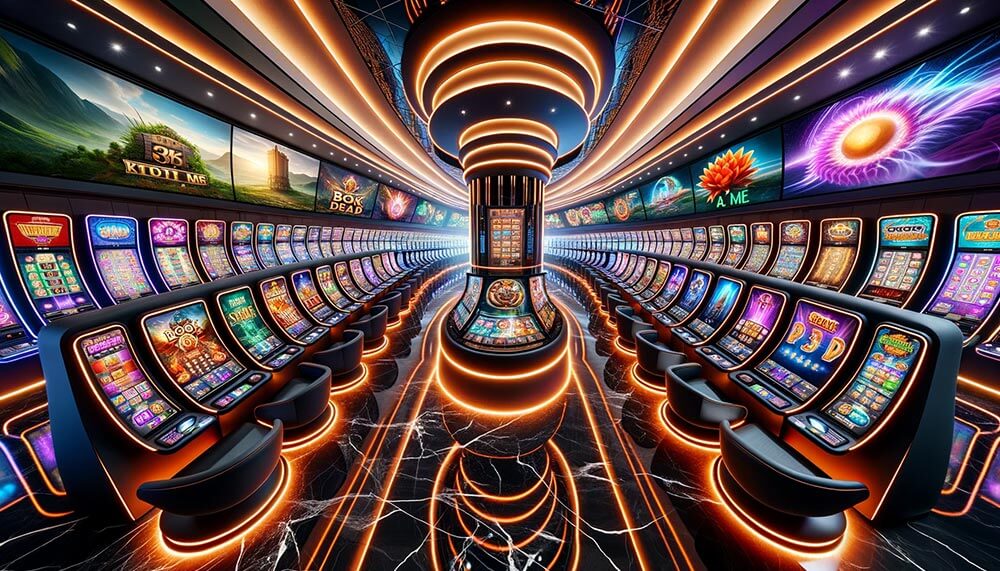The fascinating Psychological principles Behind Gambling Game Design

Gambling games have long captivated people's attention, drawing participants into a realm filled with luck, planning, and the allure of excitement. Each game is carefully crafted not just for entertainment, but also to inspire specific emotional responses that keep players involved and invested. Understanding the reasons behind these designs reveals much about how behavioral psychology plays a vital role in the gaming experience.
From the vivid lights and dynamic sounds to the complex layering of guidelines and rewards, casino games are designed to create an atmosphere of thrill and eagerness. DK7 Game designers leverage behavioral strategies to influence participant behavior, whether through the use of big prizes, near-miss scenarios, or social interactivity. By examining these aspects, we can better appreciate how casino games fulfill not just a need for entertainment, but more profound psychological needs for excitement and hazard.
Understanding Player Actions
Casino games are designed with a deep understanding of player psychology, which is crucial for luring and keeping players. The thrill of the game, coupled with the expectation of winning, creates a formidable attraction. Game designers employ elements like sonic elements, vibrant graphics, and immersive gameplay to capture attention and generate emotional responses. These sensory effects enhance the total environment, making players feel more attached in the game.
Another significant aspect of player behavior is the idea of risk/reward dynamics. Casino games often balance risky situations with the potential for considerable rewards, which can cause the phenomenon known as near-miss phenomenon. When players come close to winning, the brain secretes dopamine, strengthening their behavior and encouraging them to keep playing in quest of that fleeting win. This cycle of wish and disappointment plays a crucial role in how games are designed and advertised.
Lastly, social factors also play a critical role in player behavior at casinos. Many games are crafted to be played in teams or in company with other players, creating a sense of togetherness and shared experience. The community engagement inherent in games like poker enhances enjoyment and can culminate in prolonged gaming periods. Designers capitalize on this by designing environments that encourage players to remain, socialize, and return, making the overall casino experience more attractive.
The Role of Visuals and Audio
Imagery and audio play a significant role in improving the gambler’s experience within gambling games. Designers utilize bright colors, striking graphics, and engaging animations to attract gambler's attention and maintain their interest. The use of motifs, such as adventure or opulence, helps create an immersive atmosphere that takes players into another world. By connecting to the senses, these elements contribute to a heightened emotional response, prompting players to engage more profoundly with the games.
Audio design is just as important in enhancing the overall experience of casino games. The combination of ambient music, sound effects for winning combinations, and environmental noises creates an sound landscape that holds players enthralled. Sounds associated with victories, such as ringing bells or festive music, evoke feelings of excitement and satisfaction, encouraging players to continue playing. These sound cues are strategically placed to enhance the thrill of the game and create a more immersive experience.
Moreover, the alignment of imagery and sound is important for supporting the game's overall concept and atmosphere. Each element should align seamlessly to create a unified experience that pulls players in. The effective use of this synergy not only improves user enjoyment but also increases the chances of return play, as players become more invested in the immersive world that the casino games offer. This thoughtful combination of visuals and sound ultimately enhances player involvement and loyalty.
Reward Structures and Participation
The creation of gambling games significantly depends on incentive systems to ensure players engaged and returning for additional experiences. These systems are rooted in behavioral theories that exploit human nature and desire. Participants are often driven by the excitement of success, which is supported by immediate feedback through the game's design. This prompt satisfaction not only enhances the gaming experience but also fosters a sense of success, prompting participants to continue playing in hopes of greater gains.
Gaming establishments utilize various incentive systems, including jackpots, extra rewards, and increased rewards, to engage players. These features create a layer of excitement that maintains interest. Additionally, the randomness of results plays a significant role in sustaining interest. The intermittent reinforcement schedule, where successes are random but occur often enough, maintains participants on edge and driven to keep playing. This loop of anticipation and expectation is essential to the effectiveness of casino games.
In addition, community aspects, such as tournaments and multiplayer features, enhance the engagement factor by tapping into the competitive nature of players. The shared experience of playing with others can intensify the thrill of success and create a sense of community within the casino. By combining these community elements with effective incentive structures, casino games not only provide fun but also nurture a deeper connection among participants, reinforcing their loyalty to the gaming experience.
